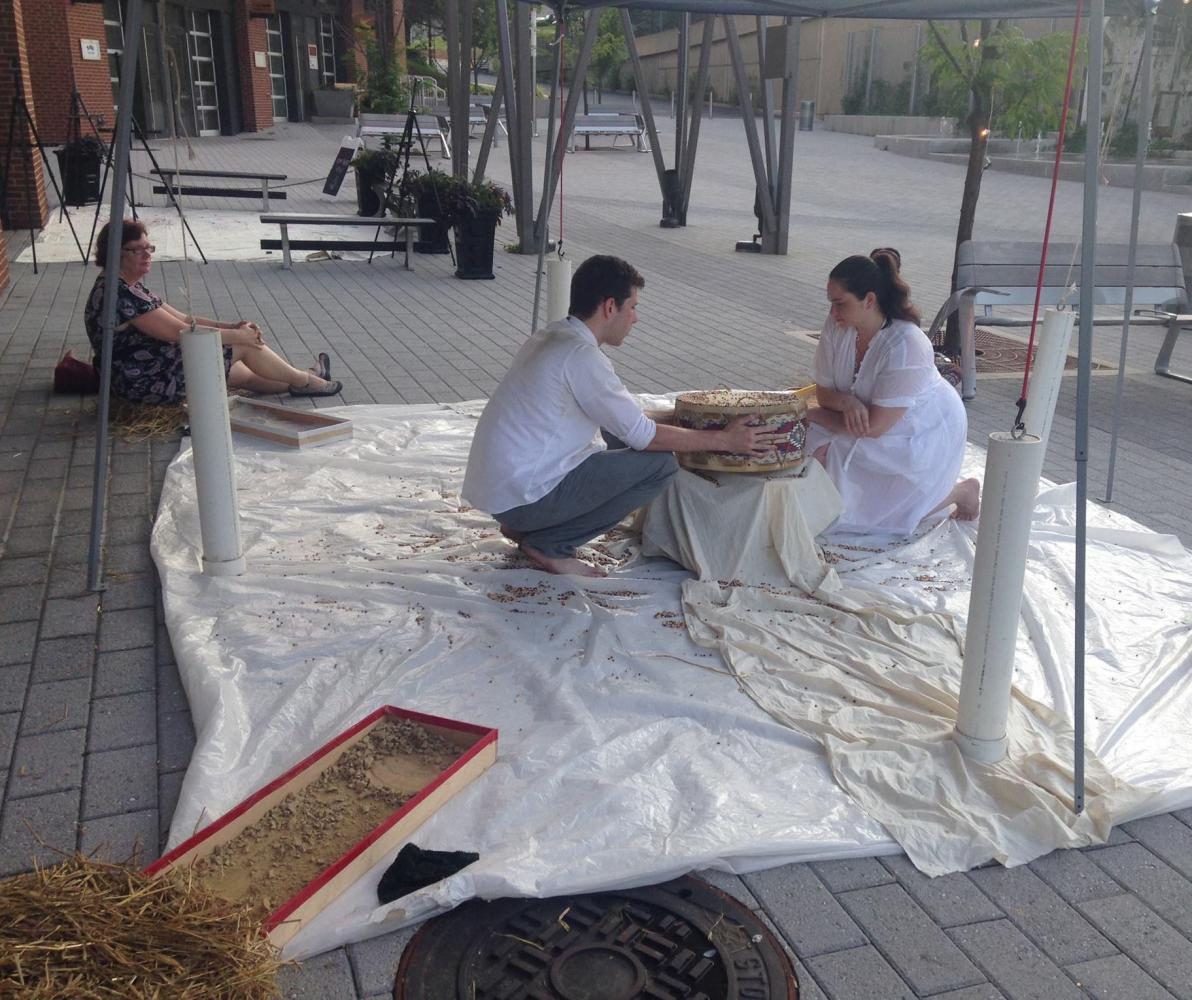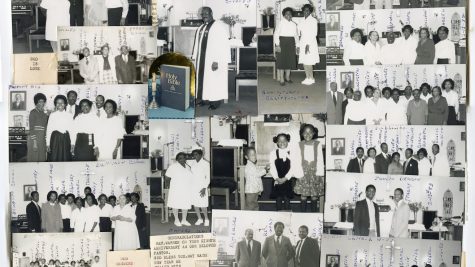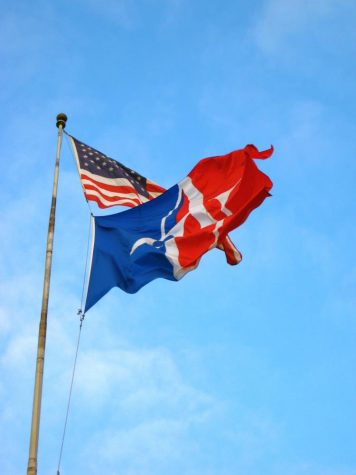Review || Art : Capital Fringe Festival’s, I Thought the Earth Remembered Me
Sleeping in the Forest
by Mary Oliver
I thought the earth remembered me,
she took me back so tenderly,
arranging her skirts, her pockets
full of lichens and seeds.
I slept as never before, a stone on the river bed,
nothing between me and the white fire of the stars,
but my thoughts, and they floated light as moths
among the branches of the perfect trees.
All night I heard the small kingdoms
breathing around me, the insects, and the birds who do their work in darkness.
All night I rose and fell, as if in water, grappling with luminous doom. By morning
I had vanished at least a dozen times
into something better.
-From “I Thought the Earth Remembered Me’s” program
The Capital Fringe Festival held each summer in DC is known for its avant-garde performances and projects that breathe color into neighborhoods often overlooked for their artistic value. The Festival’s July schedule brought me to a venue I’d never been to before, banished? ARTillery in Northeast DC, a self-described “avant-pop hybrid art practice” so small that several performances were spaced out on the sidewalk. I was there to see “I Thought the Earth Remembered Me,” a collection of five small, intimate performances about the universe and the organisms within it. In the program’s own words, the small performances are “about rooting and belonging within living kingdoms.” Some were incredibly intriguing, some confusing and some just plain odd.
For the first piece, titled “The Ceremony,” I sat down on one of four beds of straw in front of boxes filled with sand surrounding a central tribal drum covered in corn. A young man and woman were picking up the corn and dropping it down onto the drum, imitating the noise of a rainstick. They were dressed in white, and they looked white. As a longtime proponent of hearing indigenous voices share their own stories, I was immediately concerned that I was about to witness misguided appropriation and perpetuated stereotypes in an attempt to imitate an American Indian ceremony.
When the piece began, the young woman held my hand and used it as a tool, brushing away the sand in front of me to reveal a quote about the injustices of the Carlisle Indian Boarding School, which young natives were forced to attend. As my fellow observers and I read, the two ceremony practitioners began to sing a song. It was a song about being stripped of their identities and forced to change — and about how it doesn’t have to be that way. Their ceremonial music grew louder and more powerful as the song crescendoed, and when the drum’s vibrations ceased, it seemed to wipe out the pain of the song with it.
While my first impressions of the ceremony set-up made me wary, I also knew that because of intermarriages and the Indian Schools’ and America’s history of forcing whitewashed oppression onto natives, an indigenous identity is not something I could visualize, and assume or negate, in a person. Upon speaking with the performers, Ronee Penoi and Roo George-Warren, I learned that they both had native ancestry that they traced back to students at these Indian schools. The ceremony, the young woman said, is a healing one for Indian peoples meant to soothe the pain and suffering caused by these Indian boarding schools.
After learning this, my mistrust gave way to respect for these performers. They not only confronted cruel aspects of their ancestors’ pasts in order to create this piece, but they did so on the street, for any Capital Fringe Festival attendee or passerby to see and misjudge. Where even I, somewhere familiar with how American Indians have been misjudged for centuries, nearly did so on sight alone as well. And still they held their ground. How bold and courageous.
The next piece, “What I Remember,” featured a digital story coupled with an interpretive dance. A story about not having a home progressed, and the dancer, Meredith Bove, slowly moved away from us down a long alley until she disappeared. The connection between the two seemed trite and the dancer’s actual robotic movements and posing did nothing to illuminate on the story. I tried to focus on both the words as they appeared and disappeared on the screen and the dancer as she disappeared from sight but it was impossible to keep track of both. Perhaps that was the point — we get so lost in words and stories that we lose track of the people populating them, the real people that matter. But I think I’m pulling at straws and giving the piece a bit more credit than credit is due. I walked away feeling rather unmoved.
The third piece, “The Gastronome in You,” was incredibly moving however, and felt the most sincere. Still outside on the sidewalk, I stepped into a small square of space where a man and I sat on the ground with cloth walls around us, protecting us from curious eyes. This man, David Szanto, began to deliver a speech, but he spoke as though I was just a friend to whom he was telling a story. He fed me some sourdough bread and told me about his friend Gigi: he had travelled with Gigi to Italy to learn about cooking; he had come to respect Gigi for his specialty in making sourdough; and he had come to respect the bread because the dough had this yeast that made it its own living entity.
He spoke on how we as humans are our own living entities with trillions of bacteria living in and on us; they feed on us and we cannot live without them. It reminded me of a speech I’d once heard from a scientist about how our singular bodies are individual communities between ourselves and our bacteria. And even though I had heard the message before, I was very moved by the performer’s connection between the living body and a living recipe.
The performer interrupted himself to explain how he and Gigi had this old joke about a “bullshit-o-meter” that would tick up and buzz when someone was speaking too passionately about a topic. And then he went back to the dough, not commenting on how I should perceive this piece — as bullshit or something genuine. The digression felt like a subtle wink.
What I found eye-opening was when he brushed his hand with the dough and he said how it’s always pointless when you’re making dough to wash your hands because it always comes back — but it’s also living, and a part of you.
He held my hand in his with the thin layer of wet dough separating our skin. He told me that this was Gigi’s recipe and that Gigi had died a few years ago. When Gigi died, his parents wanted to pass on a piece of him to his closest friends. The story felt personal and true. When the piece was over he told me I could wipe the dough away, but I liked having the dough on my hand. It was a living entity, but it was also a memory, and the past and the future meeting together. The piece was beautifully done. People can speak passionately, and it can be about bullshit — but to me, the piece was about memory and a friend.
For the fourth piece, “Being Moss,” created by Carmen C. Womg and Ashi K. Day, I was brought blindfolded into a small hut where I knelt and felt myself surrounded by moss. A woman began to speak to me in a cool, low voice, explaining how she loved moss and wanted to return to it, even die surrounded by it. She recalled a friend questioning this death wish and her responding that her friend didn’t understand the beauty of moss — small tendrils of earth, one of the first plants. She held something to my lips on a small stone and asked me to taste. It was wet. I didn’t know what to make of the moment, but remembered participating in a ceremony once where I was not blindfolded, but my eyes were choked with heat and I had to bend over and hold onto the earth for coolness. I left not feeling reborn as I did after that ceremony, but rather feeling enlightened to a new perspective one could hold towards the earth. The secret exchange fulfilled an archetypical image in my mind of what the event I was attending would entail, based on its name alone; but the pure poetry of the woman’s confession made the moment feel serene and sacred rather than stereotypical.
The final piece, “Drift.” was a letdown. For it, I peeked through a keyhole into a 3D diagram that looked like the setting of an underwater stream. Performer Cecelia Cackley’s hands manipulated a small piece of wood I had selected, making it “dance” to the sound of running water. Eventually the wood and a dancing friend of it settled down to rest on the diagram’s “floor.” The piece felt entertaining in a childish way but did not make me think in a new way about the earth as most of the other piece’s had. I did not think differently about the materials or the moving water which gave the twig life. I left it without any new thoughts.
But as I looked at the dried dough and mossy dirt caking my hands, I was elated. The most important element of all of these pieces was the sense of secrecy, of sharing one’s innermost fears or preoccupations with the cruelty and beauty of naturalism. While some pieces felt half-conceived, the majority were inspired and insightful. I carried a bit of that insight home with me under my fingernails, hoping to chip away at the residue of new shared secrets next year.












